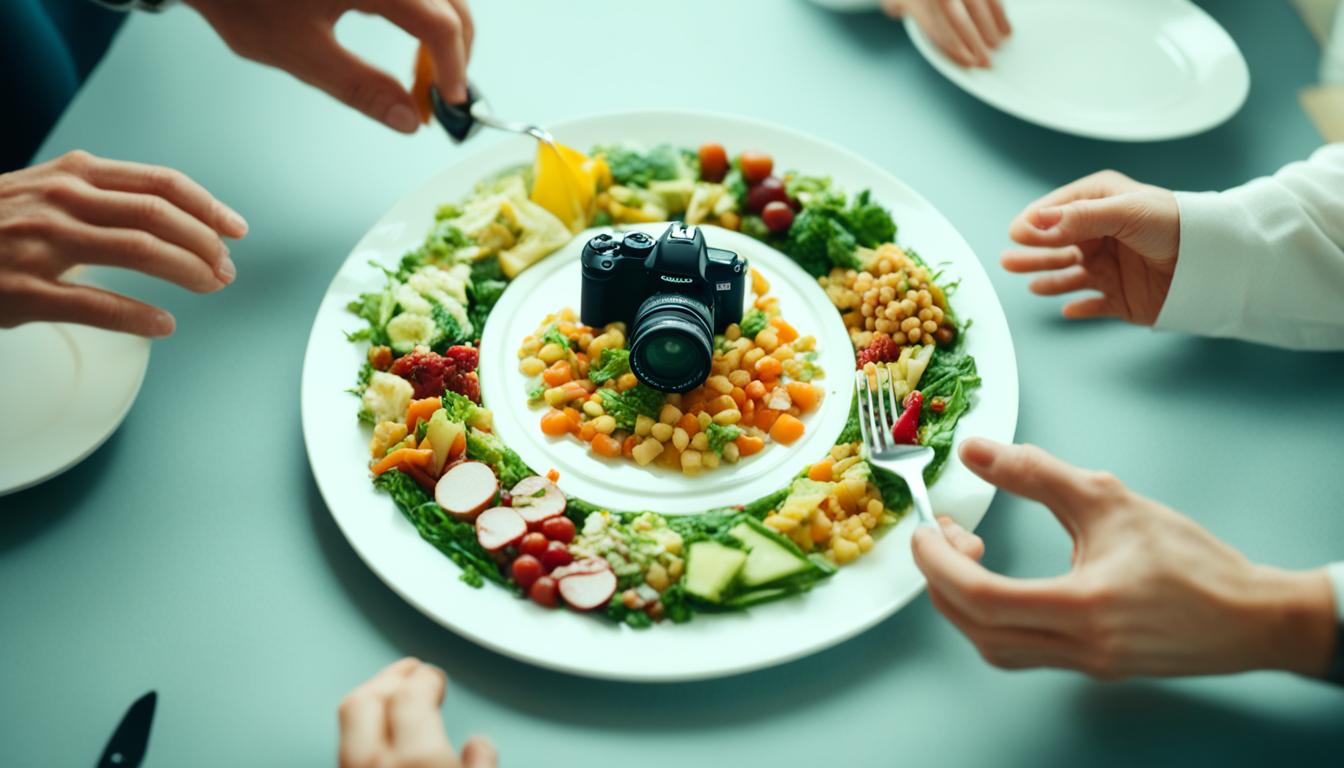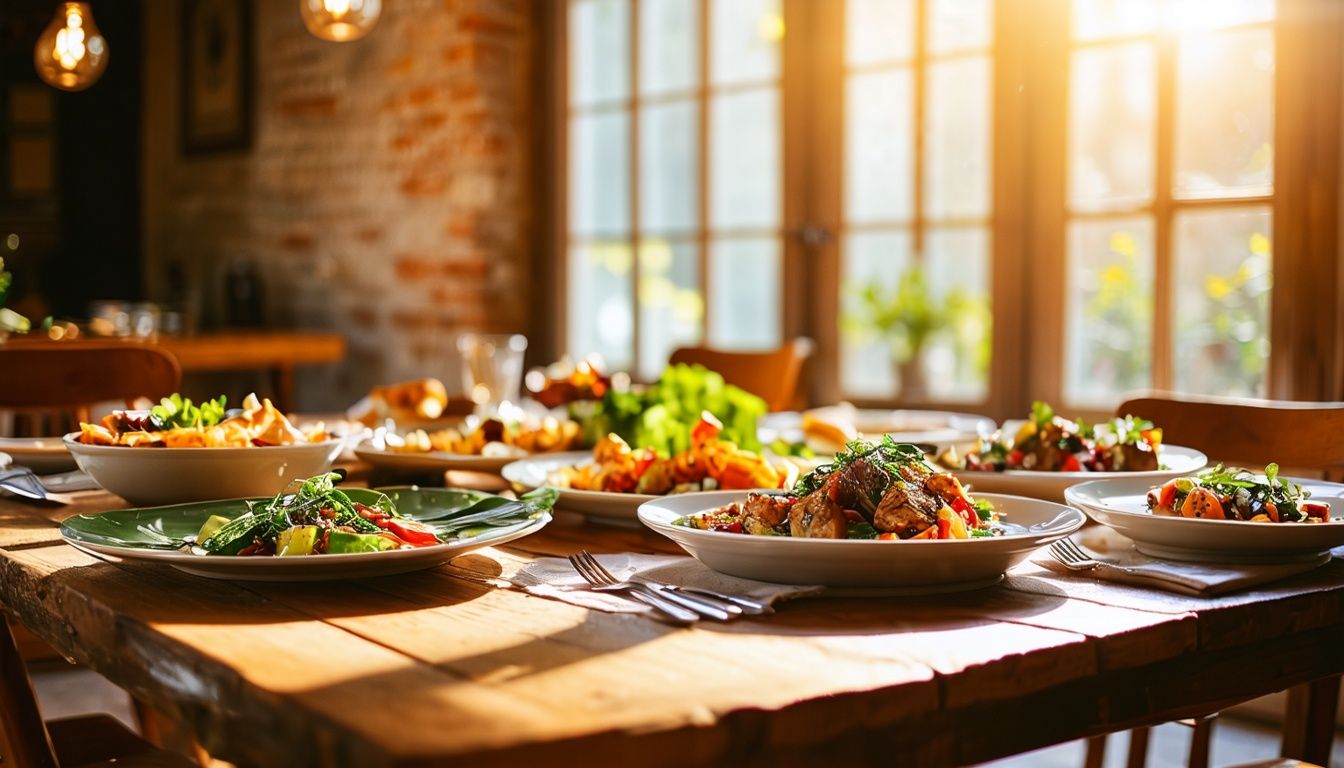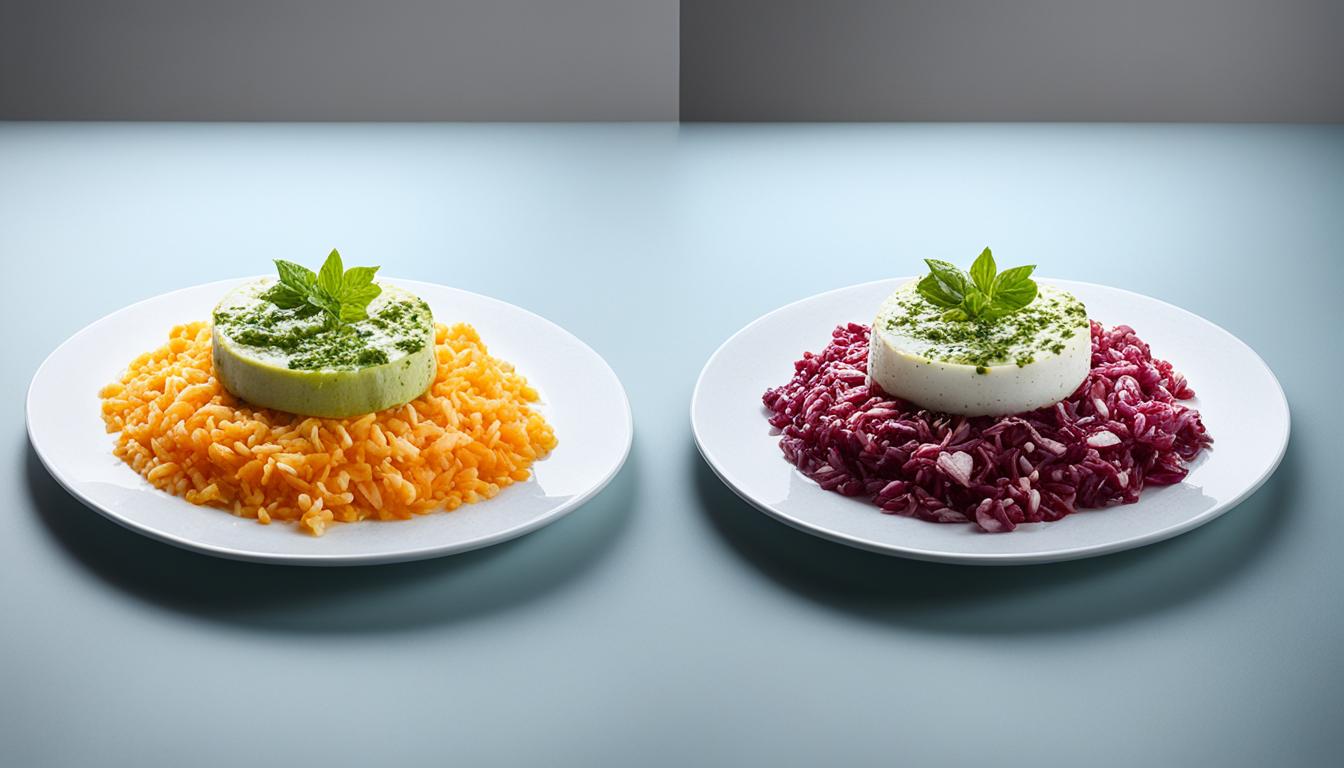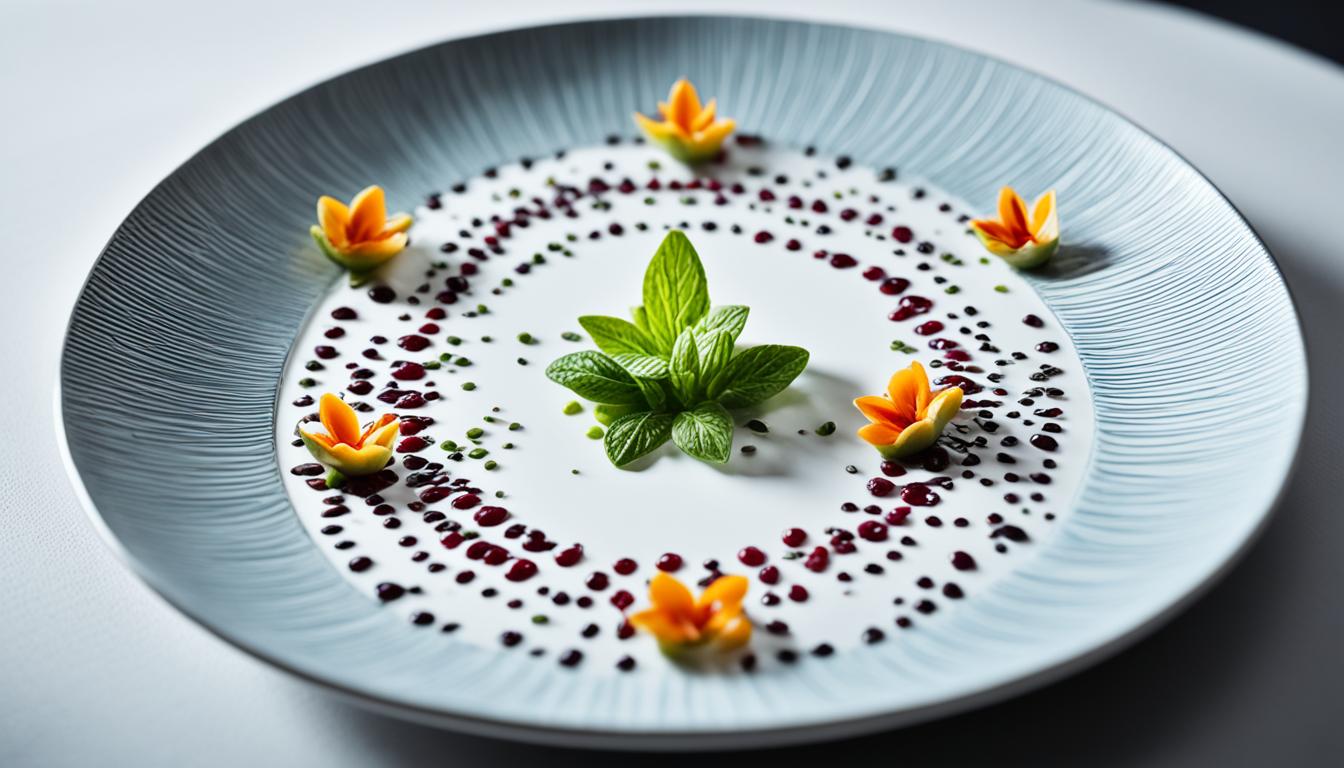Welcome to our exploration of the ethical considerations surrounding food photography. In today’s digital age, where visual content reigns supreme, food photography plays a crucial role in capturing consumers’ attention and influencing their choices. As food images inundate our screens and social media feeds, it is essential to discuss the responsible practices and guidelines that underpin this industry.
Food imagery guidelines help ensure that food styling and presentation remain honest and authentic. Responsible food styling strives to showcase the product in its true form, avoiding misleading enhancements or misrepresentation. By adhering to ethical food advertisement practices, we can establish transparency and build trust with consumers.
Key Takeaways:
- Responsible food styling and honest presentation are essential for ethical food photography.
- Food imagery guidelines help ensure transparency and prevent misrepresentation.
- Authenticity is a crucial aspect of ethical food advertising.
- Sustainable food photography practices prioritize environmentally conscious approaches.
- Transparent food styling practices foster trust and credibility with consumers.
The Art and Techniques of Food Photography
Food photography is more than simply taking pictures of food. It is an art form that requires mastery over various elements such as lighting, composition, and color.
Food photographers utilize a range of techniques to create visually appealing and appetizing images. One key aspect is lighting, which can dramatically enhance the appearance of food. Techniques like backlighting, where light is placed behind the food, can create a captivating glow and add depth to the image. This technique is particularly effective for showcasing textures and creating a sense of warmth and richness.
Another critical element is composition. Food photographers often use the rule of thirds, a technique that involves dividing the image into nine equal parts and placing the main subject along the lines or at the intersection points. This creates a visually pleasing balance and draws the viewer’s eye to the focal point of the image. Additionally, careful consideration of the placement of props and garnishes can enhance the overall composition and add visual interest.
Color plays a vital role in food photography. Photographers carefully select colors that complement the food and evoke specific emotions. For example, warm and vibrant colors like red and orange can create a sense of excitement and hunger, while cool tones like blue and green may evoke a feeling of freshness and serenity. By harmonizing colors, photographers can create a unified and visually appealing image.
Visual storytelling is another crucial aspect of food photography. By incorporating elements such as hands, ingredients, or environments, photographers can tell a story and transport viewers into a particular setting or moment. These elements help create a connection between the audience and the food, evoking sensory and emotional responses that enhance the overall impact of the image.
To illustrate the art and techniques of food photography, take a look at the image below:
“Food photography is not just about capturing the dish; it’s about creating an experience and evoking emotions through visuals. By understanding the principles of lighting, composition, color, and visual storytelling, food photographers can create stunning images that make the viewer’s mouth water and heart yearn for that delicious dish.”
– Food Photographer, Jane Thompson
| Technique | Description |
|---|---|
| Backlighting | Placing light behind the food to create a captivating glow and add depth to the image. |
| Rule of Thirds | Dividing the image into nine equal parts and placing the main subject along the lines or at the intersection points for a visually pleasing balance. |
| Color Selection | Choosing colors that complement the food and evoke specific emotions to create a unified and visually appealing image. |
| Visual Storytelling | Incorporating elements such as hands, ingredients, or environments to tell a story and create a connection between the audience and the food. |
The Impact of Food Photography on Consumer Behavior
Food photography has a profound influence on consumer behavior. When done well, these captivating images have the power to evoke sensory responses and establish an emotional connection with the audience. The visual appeal of food photography directly impacts purchasing decisions, as vibrant and high-quality images can entice consumers to try a product. Through skillful use of colors, compositions, and visual storytelling, food photographers create images that evoke feelings of warmth, comfort, or freshness, aligning with a brand’s identity and establishing a powerful connection with consumers.
Creating an Emotional Connection
One of the key factors that makes food photography so impactful is its ability to create an emotional connection with viewers. When we see a beautifully captured image of food, our senses come alive. The sight of a juicy burger or a perfectly frosted cupcake can trigger feelings of hunger, pleasure, and anticipation. These emotions play a significant role in shaping purchasing decisions, as consumers are more likely to choose products that evoke positive emotions.
Moreover, food photography helps consumers visualize the experience of enjoying a particular dish. Through carefully staged scenes, lighting, and props, photographers can transport viewers to a specific setting, whether it’s a cozy family dinner or a vibrant outdoor picnic. By engaging the imagination and tapping into our memories and aspirations, food photography creates a desire for the products being advertised.
Influencing Purchasing Decisions
The influence of food photography on purchasing decisions cannot be understated. Studies have shown that the quality and visual appeal of food images significantly impact consumers’ choices. In fact, research has found that people are more likely to choose dishes that are accompanied by appetizing photographs, even if they are less descriptive or detailed in their descriptions.
A visually enticing photograph can make a product stand out from its competitors, capturing attention and sparking curiosity. It serves as a powerful marketing tool, drawing consumers in and enticing them to try a particular dish or product. Whether it’s a beautifully styled plate of pasta or a refreshing drink on a hot summer day, food photography has the ability to stimulate cravings and trigger the desire to make a purchase.
The Role of Food Photography in Branding
Food photography not only influences individual purchasing decisions, but it also plays a critical role in branding. Through carefully crafted images, brands can communicate their identity, values, and story to the audience. Every element in a food photograph, from the colors and props to the composition and lighting, contributes to the brand’s image and positioning in the market.
By consistently using a specific style or aesthetic in their photography, brands can create a recognizable visual language that resonates with their target audience. For example, a brand that focuses on organic and sustainable products may use soft lighting, natural colors, and rustic props to convey a sense of authenticity. In contrast, a brand known for its bold and innovative flavors may use vibrant colors, dynamic compositions, and unique plating techniques to capture attention and communicate their creative spirit.

The visual impact of food photography goes beyond individual products and extends to the overall perception of a brand. Consumers associate high-quality and visually appealing images with professionalism, attention to detail, and a commitment to delivering an exceptional experience. Brands that invest in quality food photography can, therefore, establish themselves as trustworthy and desirable, influencing not only purchasing decisions but also long-term brand loyalty.
The Effect of Food Photography on Consumer Behavior
| Effect | Description |
|---|---|
| Influence on emotions | Food photography evokes positive emotions such as hunger, pleasure, and anticipation, which can impact purchasing decisions. |
| Stimulates desire | Visually enticing images make products stand out, stimulating cravings and driving the desire to purchase. |
| Branding impact | Food photography helps establish a brand’s identity, values, and story, creating a recognizable visual language. |
| Establishes trust | High-quality food photography communicates professionalism, attention to detail, and a commitment to delivering an exceptional experience. |
Food Photography in Advertising and Marketing
Food photography is a powerful tool in advertising and marketing. Brands like McDonald’s and Starbucks have successfully utilized food photography to create iconic and recognizable imagery that not only showcases their products but also tells a compelling story that resonates with their target audience.
Iconic imagery is crucial in capturing the attention of consumers and making a lasting impression. Through carefully crafted food photography, brands can evoke emotions, spark desire, and establish a strong connection with their customers.
Storytelling plays a vital role in food photography for advertising purposes. By using visual elements and composition techniques, food photographers can convey the values and personality of a brand. Whether it’s showcasing fresh ingredients, highlighting artisanal craftsmanship, or emphasizing sustainability, well-executed food photography can tell a rich narrative that captures consumers’ imaginations.
Social media marketing has revolutionized the way brands approach food photography. Platforms like Instagram have become virtual galleries for stunning food imagery, with users scrolling through their feeds in search of inspiring dishes and experiences. Brands now have the opportunity to engage with their audience in a more direct and interactive way, sharing behind-the-scenes content, offering exclusive promotions, and creating a sense of community around their products.
Collaboration with influencers and food photographers has become increasingly prevalent in food marketing. By partnering with individuals who have a strong presence and influence on social media, brands can tap into their followers and extend their reach. These collaborations leverage the expertise and creative vision of influencers and photographers to create captivating content that resonates with a wider audience.
Influence of Food Photography on Consumer Behavior
| Effect | Description |
|---|---|
| Emotional connection | Well-crafted food photography can evoke emotions and create a sense of desire, leading to a stronger connection between the consumer and the brand. |
| Purchasing decisions | High-quality and appealing food imagery can influence consumers’ purchasing decisions, as they are more likely to be enticed by visually enticing products. |
| Branding | Food photography plays a significant role in shaping a brand’s identity, conveying its values and positioning it as a trusted and desirable option in the market. |
Food photography is an integral part of advertising and marketing strategies, enabling brands to create impactful visuals, tell engaging stories, and connect with their audience on a deeper level. As the digital landscape continues to evolve, the role of food photography is only expected to grow, with new technologies and trends constantly emerging.
Conclusion
Food photography in branding goes beyond capturing food at its best. It requires a combination of visual storytelling, technical proficiency, and an understanding of psychology to create images that resonate with the audience and reinforce brand identity. As the digital landscape continues to evolve, we can expect technological advancements like 3D rendering and augmented reality to play a significant role in the future of food photography.
This advancement in technology will provide opportunities for more immersive and personalized experiences for consumers. Imagine being able to virtually interact with a dish or customize its appearance before placing an order. These advancements will undoubtedly revolutionize the way food is presented and marketed, opening up new creative possibilities for brands.
However, as we embrace these future trends, we must not overlook the ethical considerations surrounding food photography. Authenticity and transparency remain crucial in an era where consumer trust is at stake. Brands and photographers must adhere to responsible practices, ensuring that the images they present accurately represent the products and meet food imagery guidelines.
In conclusion, food photography is a powerful tool in branding that combines artistry, technology, and ethical considerations to create captivating visuals. The future of food photography holds promise with technological advancements, offering personalized experiences and pushing the boundaries of creativity. Yet, it is essential to always prioritize authenticity and maintain ethical standards in order to build trust with consumers and uphold the integrity of this influential field.
FAQ
What are the ethical considerations in food photography?
Ethical considerations in food photography revolve around responsible food styling and honest food presentation. This includes adhering to food imagery guidelines, ensuring authenticity in food styling, and practicing transparent food styling practices.
What are the art and techniques of food photography?
The art and techniques of food photography involve mastery over elements such as lighting, composition, and color. Food photographers use techniques like backlighting, the rule of thirds, and careful color selection to create appetizing and visually engaging images. Visual storytelling is also an important aspect of food photography.
How does food photography impact consumer behavior?
Food photography has a profound impact on consumer behavior. Well-captured images can evoke sensory responses and create an emotional connection with the audience. The visual appeal of food photography directly influences purchasing decisions as high-quality images can entice consumers to try a product.
How is food photography used in advertising and marketing?
Food photography is a powerful tool in advertising and marketing. It is used to create iconic and recognizable imagery that tells a story and conveys brand values. Food photography is widely utilized on platforms like Instagram, and brands often collaborate with influencers and food photographers to reach wider audiences and create engaging content.
What are future trends and ethical considerations in food photography?
The future of food photography is expected to incorporate technological advancements like 3D rendering and augmented reality. However, ethical considerations regarding authenticity and misrepresentation in food photography remain important. The focus is on creating personalized experiences while maintaining transparency and adhering to ethical guidelines.
How Do Ethical Considerations Play a Role in Mastering Food Photography Lighting Techniques?
Ethical considerations play a crucial role in mastering food photography lighting techniques. It’s important to ensure that the food is presented in an honest and accurate way, without misleading the audience. Properly mastering food photography lighting techniques allows for the creation of beautiful and truthful images that showcase the food in its best light.
Source Links
- https://static1.squarespace.com/static/64408814cf7b7e662f24606f/t/64491e34576bf802191935b4/1682513460626/CAS-842-730 Research Paper Fritz Klug The Ethics of Food Styling and Photography.pdf
- https://www.linkedin.com/pulse/taste-brand-success-food-photographys-influence-seth-silver-agolf?trk=article-ssr-frontend-pulse_more-articles_related-content-card
- https://www.linkedin.com/pulse/art-science-food-photography-branding-seth-silver-dpiwc?trk=article-ssr-frontend-pulse_more-articles_related-content-card




